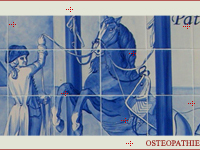Definition
 |
Each osteopath has a very personal relationship to the patient and therefore a definition each time different from Osteopathy. Whatever these differences, life is complex and rewarding difference: "The highly focused on Science joined the inability to think what is global, connected, complex. Science ignores the complexity of reality. "Edgar Morin, director of research at CNRS. Osteopathy is concerned with mobility restrictions and their correction. This approach, codified by Still, is not so recent: "It is necessary to have a solid knowledge of the spine, because many diseases are actually caused by a defective condition of the body" From Hippocrates Articuli § 45. Restrictions on mobility, or osteopathic dysfunctions are the result of a neurological disorder prepared well in advance. The nervous system, great messenger, which includes all the tissues of an organism, is obviously the key to try to understand how all the symptoms associated with osteopathic lesion can interact and especially how can osteopathic manipulation work? How articular disruption (bone and soft tissue) can affect local and far away, may be connected with other pathological factors, be positively identified and corrected by osteopathic manipulation and, thus, all disturbances associated? For a physiologist, it seems reasonable to assume that resistance to movement that characterizes the lesion osteopathic joint, is the product of the action of one or more of the muscles that move the joint in question. Muscle tissues are the only assets, but also producers of shock movement, the antagonist role to make the move smooth! These two functions of creation and absorption of energy are based on the same cellular mechanism, that of contraction. The diagnosis is based on osteopathic research facility or restriction of mobility: it is in its braking functions that the muscle can become the major and highly variable in mobility in the joints. This section's articles
|